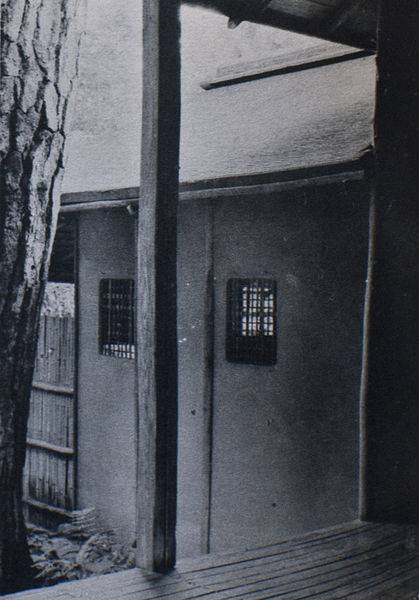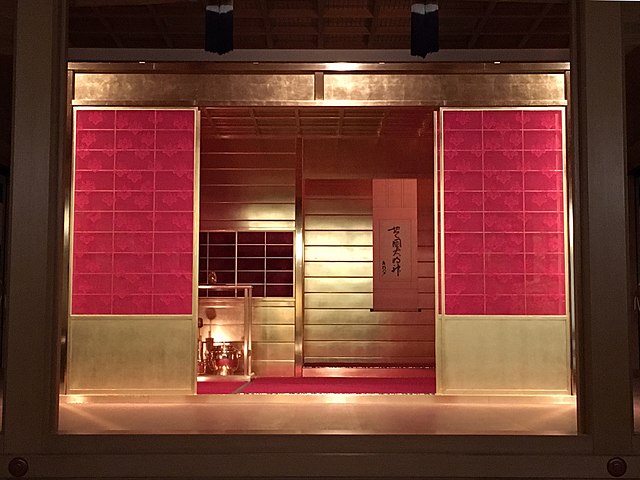Chashitsu in Japanese tradition is an architectural space designed to be used for tea ceremony (chanoyu) gatherings.
Jo-an is a chashitsu (tea house) and inscribed as a National Treasure
Interior view of a tea room
Tai-an (待庵), the only extant chashitsu designed by Sen no Rikyū, representing his concept of wabi-cha. Located in Myōki-an in Ōyamazaki, Kyoto (National Treasure)
The Golden Tea Room (MOA Museum of Art)
The Japanese tea ceremony is a Japanese cultural activity involving the ceremonial preparation and presentation of matcha (抹茶), powdered green tea, the procedure of which is called temae (点前).
Master Sen no Rikyū, who codified the way of tea (painting by Hasegawa Tōhaku)
An open tea house serving matcha (ippuku issen (一服一銭), right) and a peddler selling extracts (senjimono-uri (煎じ物売) left), illustration from Shichiju-ichiban shokunin utaawase (七十一番職人歌合), Muromachi period; Ippuku issen's monk clothing depicts the relationship between matcha culture, tea offerings, and Buddhism
One of the earliest surviving images of the formal serving of tea. Here monkeys, who were sacred to the shrine, imitate humans in a poetry competition that lasts all night. The monkeys try to stay awake by drinking strong green tea, but some have fallen asleep
Jo-an chashitsu (National Treasure)







